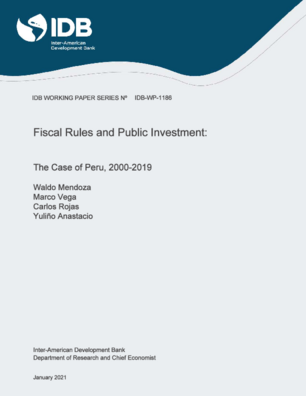Fiscal Rules and Public Investment: The Case of Peru, 2000-2019
Date
Jan 2021
This article has three goals. First, it describes the genesis of fiscal rules in Peru and its degree of compliance. Second, it estimates the effect of fiscal rules adoption on public investment. Last, it analyzes the impact of alternative fiscal rules on public investment and public debt sustainability. Our main results are as follows. First, the implementation of fiscal rules in the year 2000 caused a 60 to 80 percent fall in public investment relative to several counterfactuals. Second, our DSGE model suggests a Structural Fiscal Rule would have increased the consumers welfare in the period 2000-2019 more than other fiscal designs. This rule reduces the procyclicality of public investment under commodity price shocks and macroeconomic volatility under world interest rate shocks. Third, a Structural Fiscal Rule has the lowest probability of exceeding the current public debt limit (30 percent of GDP), although there is a trade-off between investment-friendly rules and fiscal sustainability issues. Nevertheless, our quantitative results are limited to short spans of analysis. With a long-run perspective, we may say that fiscal rulesdespite constant modifications and recurring non-compliancehave fulfilled their original and most important goal of achieving the consolidation of public finances.




